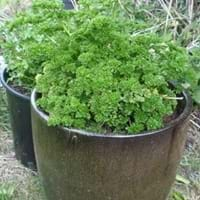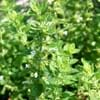Life Span
Perennial
Annual or Biennial
Origin
Southern Europe
Southern Europe
Types
Not available
Not available
Habitat
Dappled Shade, Mediterranean region, Shady Edge, Woodland Garden
Subtropical climates, Temperate Regions
USDA Hardiness Zone
4-9
6-9
Sunset Zone
1a, 1b, 2a, 2b, 3a, 3b, 4, 5, 6, 7, 8, 9, 10, 11, 12, 13, 14, 15, 16, 17, 18, 19, 20, 21, 22, 23, 24
A3, 1a, 1b, 2a, 2b, 3a, 3b, 4, 5, 6, 7, 8, 9, 10, 11, 12, 13, 14, 15, 16, 17, 18, 19, 20, 21, 22, 23, 24
Habit
Clump-Forming
Clump-Forming
Flower Color
White, Light Pink
Yellow green
Flower Color Modifier
Bicolor
Bicolor
Fruit Color
Brown
Sandy Brown
Leaf Color in Spring
Green, Light Green
Green
Leaf Color in Summer
Green, Light Green
Green
Leaf Color in Fall
Green, Light Green
Green
Leaf Color in Winter
Light Green
Light Green
Plant Season
Spring, Summer, Fall
Spring, Summer, Fall
Sunlight
Full Sun, Partial Sun
Full Sun, Partial Sun
Type of Soil
Loam, Sand
Loam, Sand
The pH of Soil
Neutral
Neutral
Soil Drainage
Well drained
Well drained
Bloom Time
Late Spring, Early Summer, Summer
Early Summer, Summer
Tolerances
Deer resistant, Drought
Drought
Where to Plant?
Ground, Pot
Ground
How to Plant?
Cuttings, Seedlings
Seedlings, Transplanting
Plant Maintenance
Low
Medium
Watering Requirements
Medium
Average Water Needs, Requires regular watering
In Summer
Lots of watering
Lots of watering
In Spring
Moderate
Moderate
In Winter
Average Water
Average Water
Soil Type
Loam, Sand
Loam, Sand
Soil Drainage Capacity
Well drained
Well drained
Sun Exposure
Full Sun, Partial Sun
Full Sun, Partial Sun
Pruning
Remove damaged leaves, Remove dead branches, Remove dead flowers, Remove dead leaves
Remove damaged leaves, Remove dead branches, Remove dead leaves
Fertilizers
Nitrogen, Potassium
All-Purpose Liquid Fertilizer
Pests and Diseases
Gray leaf blight, Gray mold, Leaf spot, Powdery mildew
bees, Birds, Caterpillars, Red blotch
Plant Tolerance
Deer resistant, Drought
Drought
Flowers
Insignificant
Showy
Flower Petal Number
Single
Single
Fragrant Bark/Stem
Yes
Yes
Foliage Texture
Medium
Medium
Foliage Sheen
Matte
Glossy
Attracts
Bees
Butterflies
Allergy
Avoid during Pregnancy, Skin irritation
Anaphylaxis, angioedema, Rhinitis
Aesthetic Uses
Beautification, Cottage Garden
Not Used For Aesthetic Purpose
Beauty Benefits
Good for skin, Skin Problems
Not Available
Edible Uses
Insignificant
Yes
Environmental Uses
Deer resistant, Insect Repellent
Air purification
Medicinal Uses
Antiemetic, Anxiety, Appetite enhancer, Digestion problems, Insomnia, Sedative
Antioxidants, Vitamin A, Vitamin B, Vitamin K
Part of Plant Used
Flowers, Leaves
Leaves, Stem
Other Uses
Can be made into a herbal tea, Medicinal oil, Used as insect repellent, Used for its medicinal properties, Used in herbal medicines
Used as a nutritious food item, Used for its medicinal properties
Used As Indoor Plant
Yes
Yes
Used As Outdoor Plant
Yes
Yes
Garden Design
Container, Edible, Herb / Vegetable
Edible, Herb, Vegetable
Botanical Name
MELISSA officinalis
PETROSELINUM crispum 'Extra Curled Dwarf'
Common Name
Lemonbalm, balm, common balm, balm mint
Curly Parsley, Curlyleaf Parsley, Extra Curled Dwarf Parsley, Parsley
In Hindi
नींबू बाम
घुंघराले अजमोद
In German
Lemonbalm
Karle Petersilie
In French
mélisse
Karle persil
In Spanish
Lemonbalm
perejil karle
In Greek
Lemonbalm
Karle μαϊντανό
In Portuguese
Lemonbalm
Karle salsa
In Polish
Lemonbalm
Karle pietruszki
In Latin
CITRAGO
Karle apio
Phylum
Magnoliophyta
Tracheobionta
Class
Magnoliopsida
Magnoliopsida
Family
Lamiaceae
Apiaceae
Genus
Melissa
Petroselinum
Clade
Angiosperms, Asterids, Eudicots
Angiosperms, Asterids, Eudicots
Tribe
Not Available
Not Available
Subfamily
Nepetoideae
Not Available
Number of Species
Not Available
Season and Care of Lemonbalm and Curly Parsley
Season and care of Lemonbalm and Curly Parsley is important to know. While considering everything about Lemonbalm and Curly Parsley Care, growing season is an essential factor. Lemonbalm season is Spring, Summer and Fall and Curly Parsley season is Spring, Summer and Fall. The type of soil for Lemonbalm is Loam, Sand and for Curly Parsley is Loam, Sand while the PH of soil for Lemonbalm is Neutral and for Curly Parsley is Neutral.
Lemonbalm and Curly Parsley Physical Information
Lemonbalm and Curly Parsley physical information is very important for comparison. Lemonbalm height is 30.50 cm and width 45.70 cm whereas Curly Parsley height is 15.20 cm and width 25.40 cm. The color specification of Lemonbalm and Curly Parsley are as follows:
Lemonbalm flower color: White and Light Pink
Lemonbalm leaf color: Green and Light Green
Curly Parsley flower color: Yellow green
- Curly Parsley leaf color: Green
Care of Lemonbalm and Curly Parsley
Care of Lemonbalm and Curly Parsley include pruning, fertilizers, watering etc. Lemonbalm pruning is done Remove damaged leaves, Remove dead branches, Remove dead flowers and Remove dead leaves and Curly Parsley pruning is done Remove damaged leaves, Remove dead branches and Remove dead leaves. In summer Lemonbalm needs Lots of watering and in winter, it needs Average Water. Whereas, in summer Curly Parsley needs Lots of watering and in winter, it needs Average Water.





